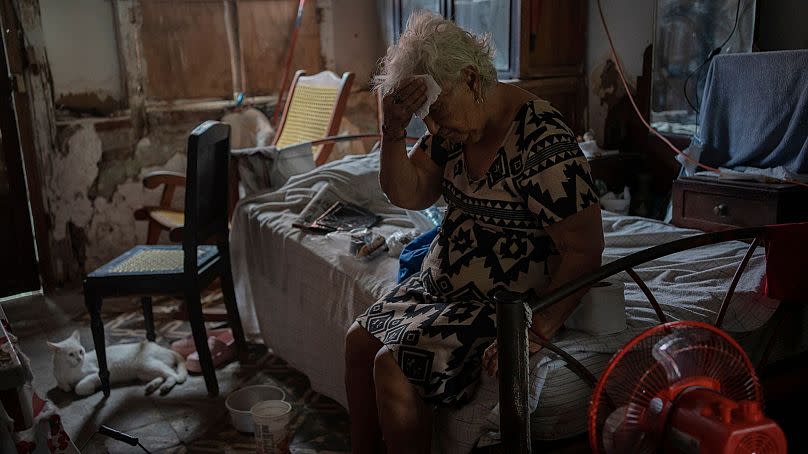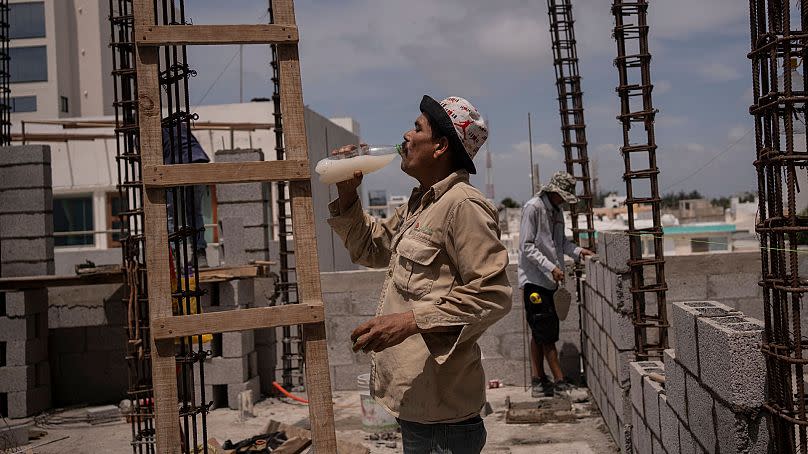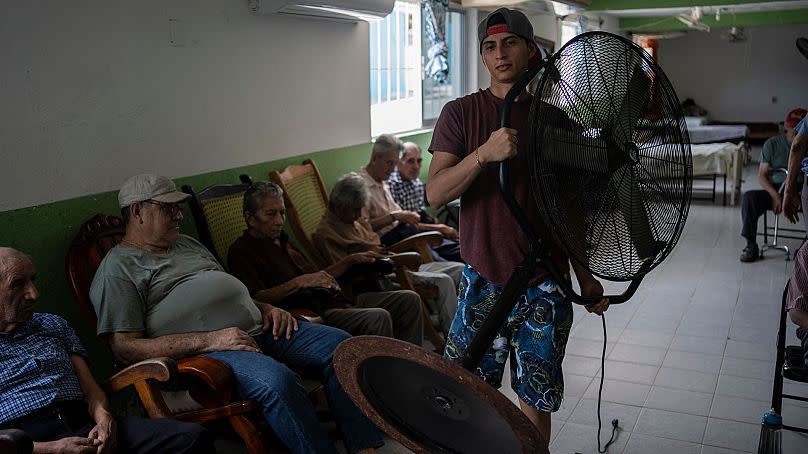‘It's an oven here’: Killer heatwave in Mexico and US made 35 times more likely by climate change

- Oops!Something went wrong.Please try again later.
Human-caused climate change made this month's killer heatwaves in Mexico, Central American and the US southwest even warmer and 35 times more likely, a new study has found.
Sizzling daytime temperatures that triggered cases of heat stroke in parts of the United States were 1.4C hotter because of the warming from the burning of coal, oil and natural gas, World Weather Attribution, a collection of scientists that run rapid and non-peer reviewed climate attribution studies, calculated on Thursday.
“It's an oven here; you can't stay here,” says 82-year-old Margarita Salazar Pérez of Veracruz, Mexico, in her home with no air conditioning. Last week, the Sonoran Desert hit 51.9C, the hottest day in Mexican history, according to study co-author Shel Winkley, a meteorologist at Climate Central.
Mexico's heatwave has claimed 125 lives this year
Mexico recorded its hottest day in history last week when temperatures in the Sonoran Desert hit 51.7C.
The country's ongoing heatwave has claimed the lives of at least 125 people this year.
And it was even worse at night, which is what made this heatwave so deadly, says Imperial College of London climate scientist Friederike Otto, who coordinates the attribution study team. Climate change made nighttime temperatures 1.6C warmer and unusual evening heat 200 more times more likely, she says.
There's just been no cool air at night like people are used to, Salazar Pérez says. Doctors say cooler night temperatures are key to surviving a heatwave.
At least 125 people have died so far, according to the World Weather Attribution team.

Climate change is increasing intensity and risks of extreme temperatures
“This is clearly related to climate change, the level of intensity that we are seeing, these risks," says study co-author Karina Izquierdo, a Mexico City-based urban advisor for the Red Cross and Red Crescent Climate Centre.
The alarming part about this heatwave, which technically is still cooking the North American continent, is that it's no longer that out of the ordinary anymore, Otto says. Past studies by the group have looked at heat so extreme that they found it impossible without climate change, but this heatwave not so much.
“From a weather perspective in that sense it wasn't rare, but the impacts were actually really bad,” says Otto.
Germany, Hungary, Turkey: Heatwaves and storms disrupt life across Europe
Hottest summer ever? Experts reveal what could be in store for Europe in the next few months
“The changes we have seen in the last 20 years, which feels like just yesterday, are so strong,” Otto says. Her study found that this heatwave is now four times more likely to happen now than it was in the year 2000 when it was nearly 0.5C cooler. “It seems sort of far away and a different world.”
While other groups of international scientists - and the global carbon emissions reduction target adopted by countries in the 2015 Paris climate agreement - refer to warming since pre-industrial time in mid 1800s, Otto says comparing what's happening now to the year 2000 is more striking.
“We’re looking at a shifting baseline - what was once extreme but rare is becoming increasingly common,” says University of Southern California Marine Studies Chair Carly Kenkel, who wasn't part of the attribution team's study. She says the analysis is “the logical conclusion based on the data.”

A month of record breaking temperatures
The study looked at a large swath of the continent, including southern California, Arizona, New Mexico, Texas, Oklahoma, Mexico, Guatemala, El Salvador, Belize and Honduras and the hottest five consecutive days and hottest five consecutive nights. For most of the area, those five days ran from 3 to 7 June and those five nights were 5 to 9 June, but in a few places the peak heat started on 26 May, Otto says.
For example, San Angelo, Texas, hit a record 43.8C on 4 June. Between 2 and 6 June the night temperature never dipped below 26.7C at Corpus Christi airport, a record each night, with two days when the thermometer never dropped below 29.4C according to the National Weather Service.
Between 1-15 June, more than 1,200 daytime high temperature records were tied or broken in the United States and nearly 1,800 nighttime high temperature records were reached, according to the National Center for Environmental Information.
The attribution team used both current and past temperature measurements, contrasting what is happening to what occurred in past heatwaves. They then used the scientifically accepted technique of comparing simulations of a fictional world without human-caused climate change to current reality to come up with how much global warming factored into the 2024 heatwave.

Continuing weather extremes exacerbate existing inequalities
The immediate meteorological cause was a high pressure system parked over central Mexico that blocked cooling storms and clouds, then it moved to the US Southwest and is now bringing the heat to the US East, Winkley says. Tropical Storm Alberto formed on Wednesday and is heading to northern Mexico and southern Texas with some rains, which may cause flooding.
Mexico and other places have been dealing for months with drought, water shortages and brutal heat. Monkeys have been dropping from trees in Mexico from the warmth.
This heatwave "exacerbates existing inequalities” between rich and poor in the Americas, Izquierdo says, and Kenkel agrees. The night heat is where the inequalities really become apparent because the ability to cool down with central air conditioning depends on how financially comfortable they are, Kenkel says.
And that means during this heatwave Salazar Pérez has been quite uncomfortable.

